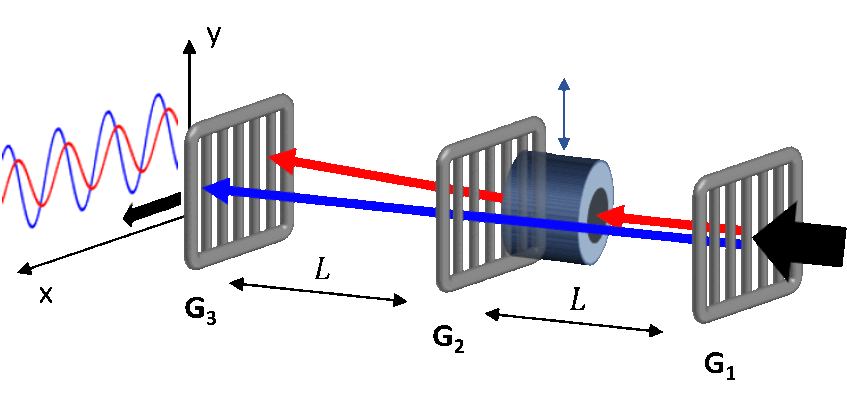Measuring Atomic and Molecular Magnets in LUMI 1.0

Many atoms and most molecules exhibit only weak diamagnetic properties which are usually hard to quantify on isolated molecules in free flight. LUMI interferometry offers a spatial resolution for matter-wave fringes on the nanometer level and can therefore determine even small matter-wave fringe shifts with high accuracy.
For particles with a magnetic moment, such fringe shifts are imparted by a magnetic field gradient.
For particles without a permanent magnetic moment their magnetic susceptibility can cause a fringe shift inside a Hallbach magnet with a strong product of magnetic field and magnetic field gradient.
a) We find that even formally entirely non-magnetic molecules such as isotope pure fullerene C60 - it has neither electron spin nor nuclear spin nor electron orbital angular momentum - can exhibit a rotational magnetic moment that can be seen in matter-wave interferometry
- Y. Y. Fein, S. Pedalino, A. Shayeghi, F. Kialka, S. Gerlich, and M. Arndt
Nanoscale Magnetism Probed in a Matter-Wave Interferometer
Phys. Rev. Lett 129, 123001 (2022) DOI: 10.1103/PhysRevLett.129.123001
b) we find that we can shed light on molecular orientation in molecular beams by even a small change in the effective diamagnetism of adamanthane and anthracene:
- Y.Y. Fein, A. Shayeghi, F. Kiałka, P. Geyer, S. Gerlich, and M. Arndt,
Quantum-assisted diamagnetic deflection of molecules
Phys. Chem. Chem. Phys. 22, 14036 (2020), DOI: 10.1039/d0cp02211j, PCCP Hot Paper
c) We find that we can see individual nuclear spins and the weak diamagnetism in atoms:
- Y.Y. Fein, A. Shayeghi, L. Mairhofer, F. Kialka, P. Rieser, P. Geyer, S. Gerlich, M. Arndt
Quantum-Assisted Measurement of Atomic Diamagnetism,
Phys. Rev. X 10, 011014 (2020), DOI: 10.1103/PhysRevX.10.011014
d) Such measurements promise to also give access to molecular conformation changes with ring-openings of aromatic fragments.
- L. Mairhofer, S. Eibenberger, A. Shayeghi, M. Arndt,
A quantum ruler for magnetic deflectometry,
Entropy 20, 516 (2018), DOI: 10.3390/e20070516
